Web Analytics Experience
Written by Patrik Braborec |

As data-driven decision-making becomes more critical in modern business, companies require advanced analytics solutions to extract valuable insights from their data. One of the latest trends in the field of analytics is the ability to create and maintain analytics as code — with this approach, companies can significantly increase productivity by reducing context switching and duplication of effort.
In GoodData you can use, create, edit, and maintain analytics in the same space as the modern analytics lives — in the browser, which eliminates the need to switch between different tools or platforms.
Collaboration
Analytics is not a one-person job but rather the job of multiple people, therefore the ability to cooperate easily is crucial. In GoodData, you can cooperate with other people in one workspace and build limitless dashboards, visualizations, or metrics.
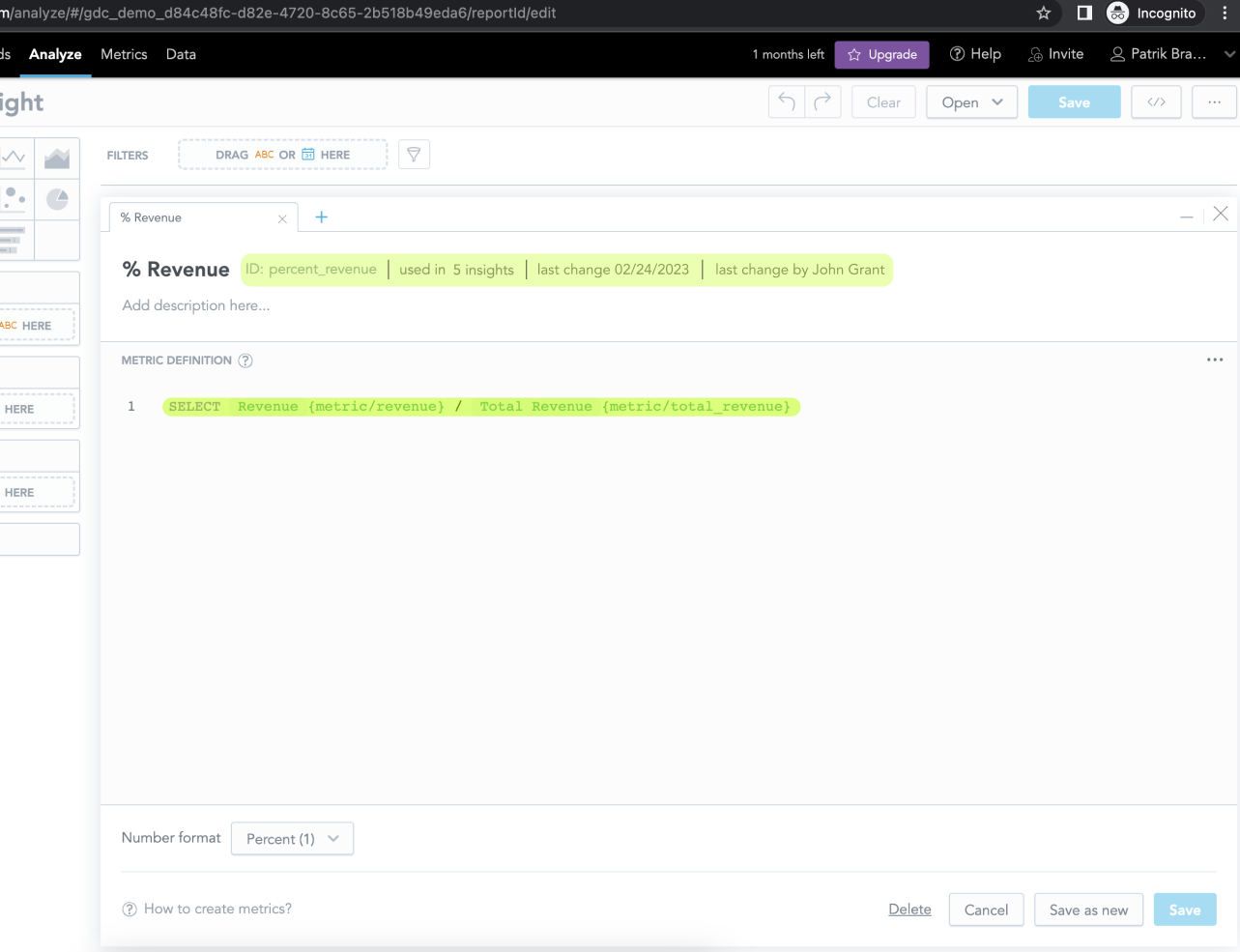
The screenshot shows the definition of metrics. To successfully cooperate on analytics, it is important to see where particular metrics are used or, for example, who made the last change.
Change Management
Do you want to edit or remove a visualization? Are you sure you won't influence other people's work or break a dashboard? Change management plays an important role here:
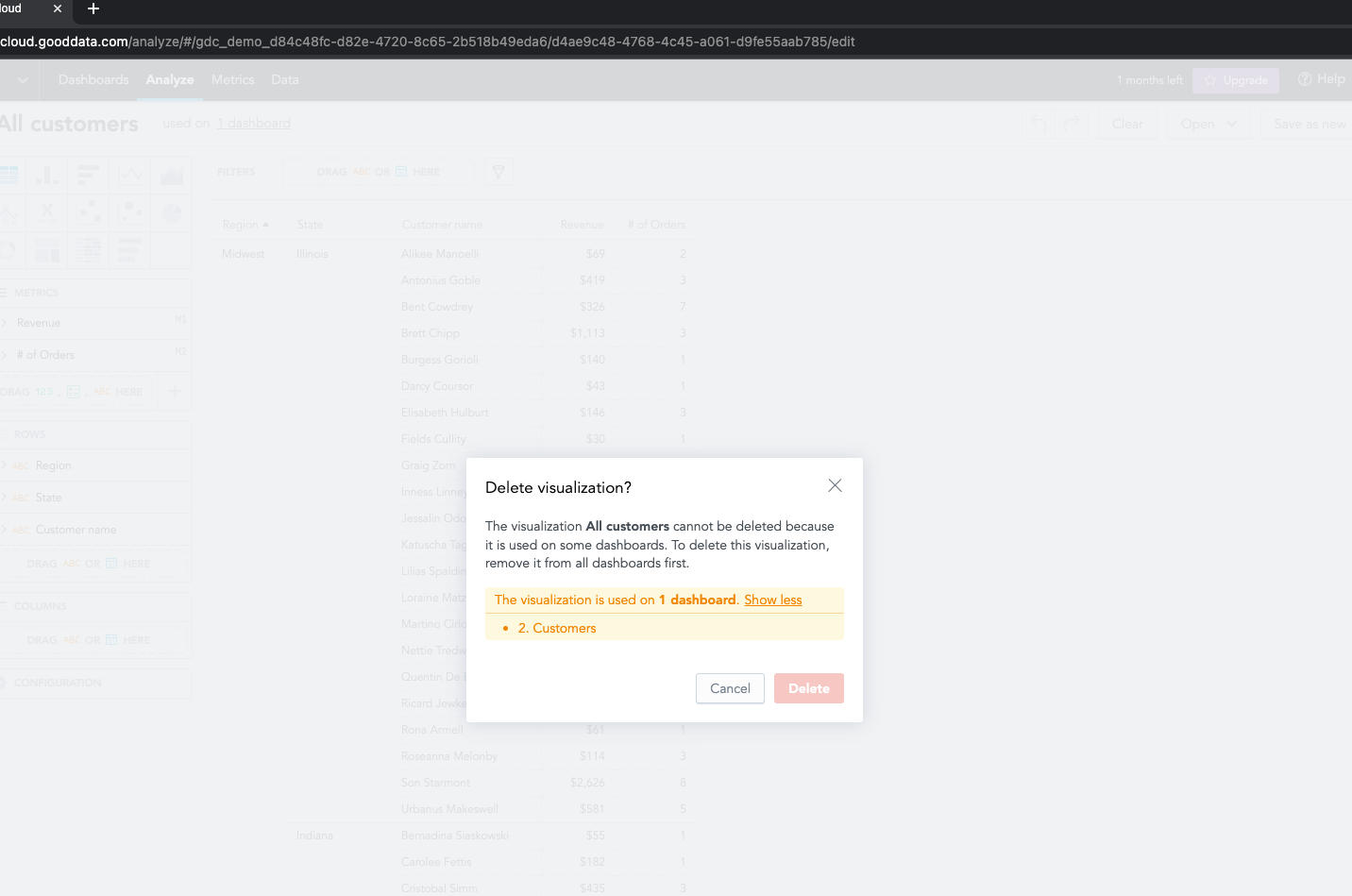
Without this information, you would delete the visualization and not even notice that you broke the dashboard! What about data and data modeling?
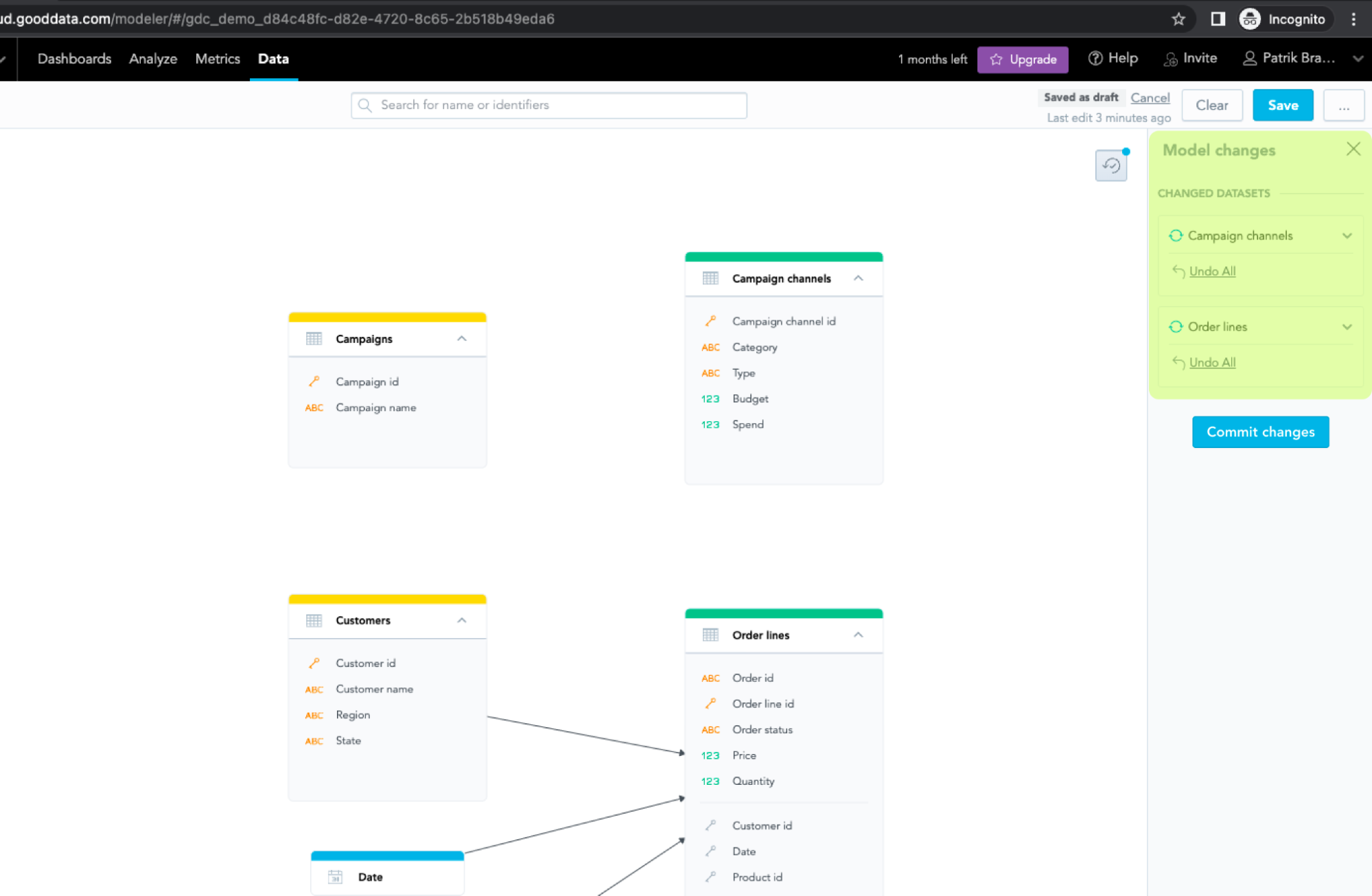
As you can see, it is also important to track changes in data models and have the possibility to undo the changes if you make a mistake without breaking the analytics. Do you want to version changes in case you would want to move to a particular state of the data model in the future? Just commit changes!
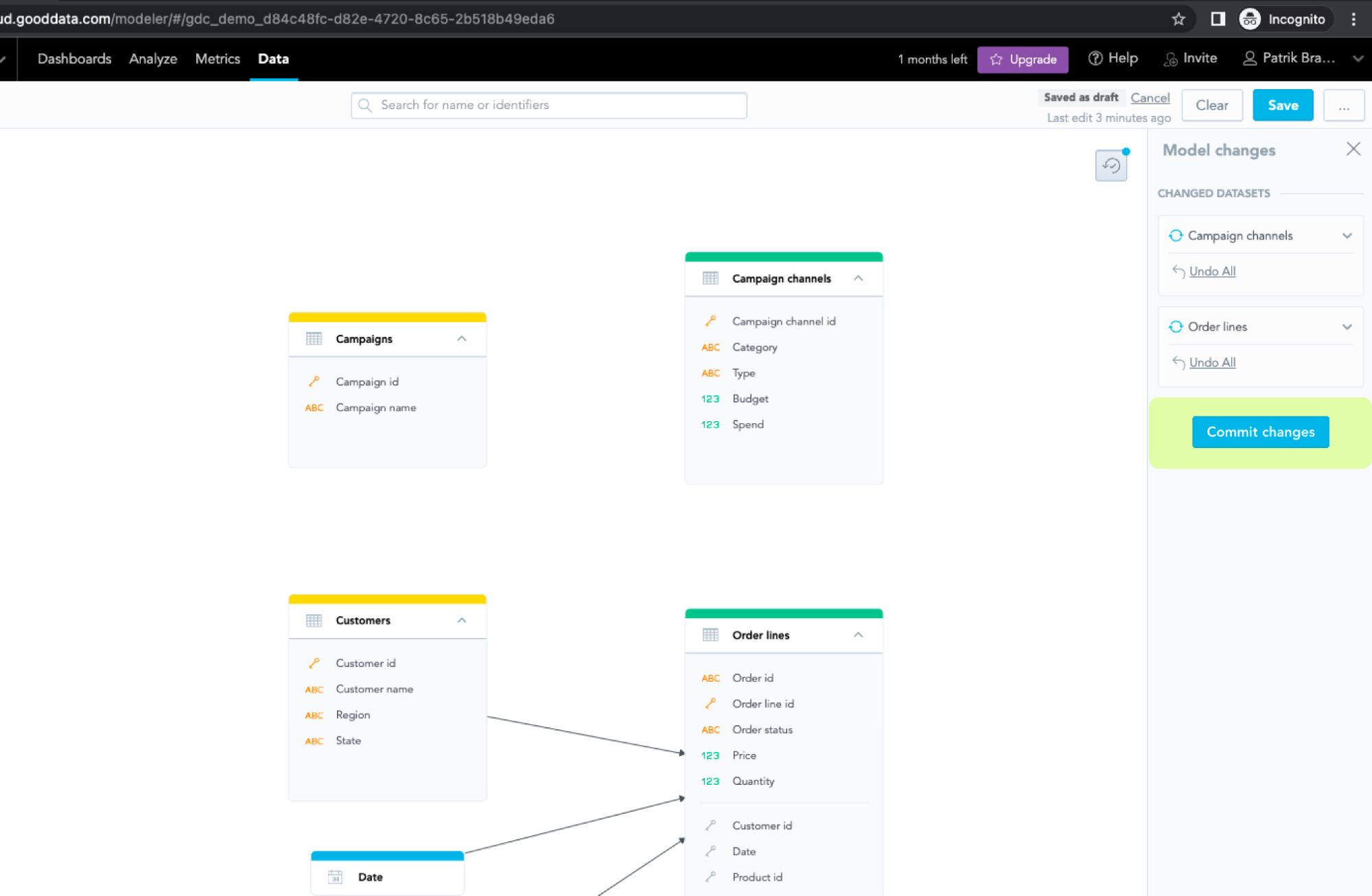
Effectivity, Testing, and Validation
The best way to be effective is to stay in one environment and minimize context switching. For example, you define metrics and you want to see the result immediately. Without context-switching and staying in one environment, the analytics job can be done much faster.
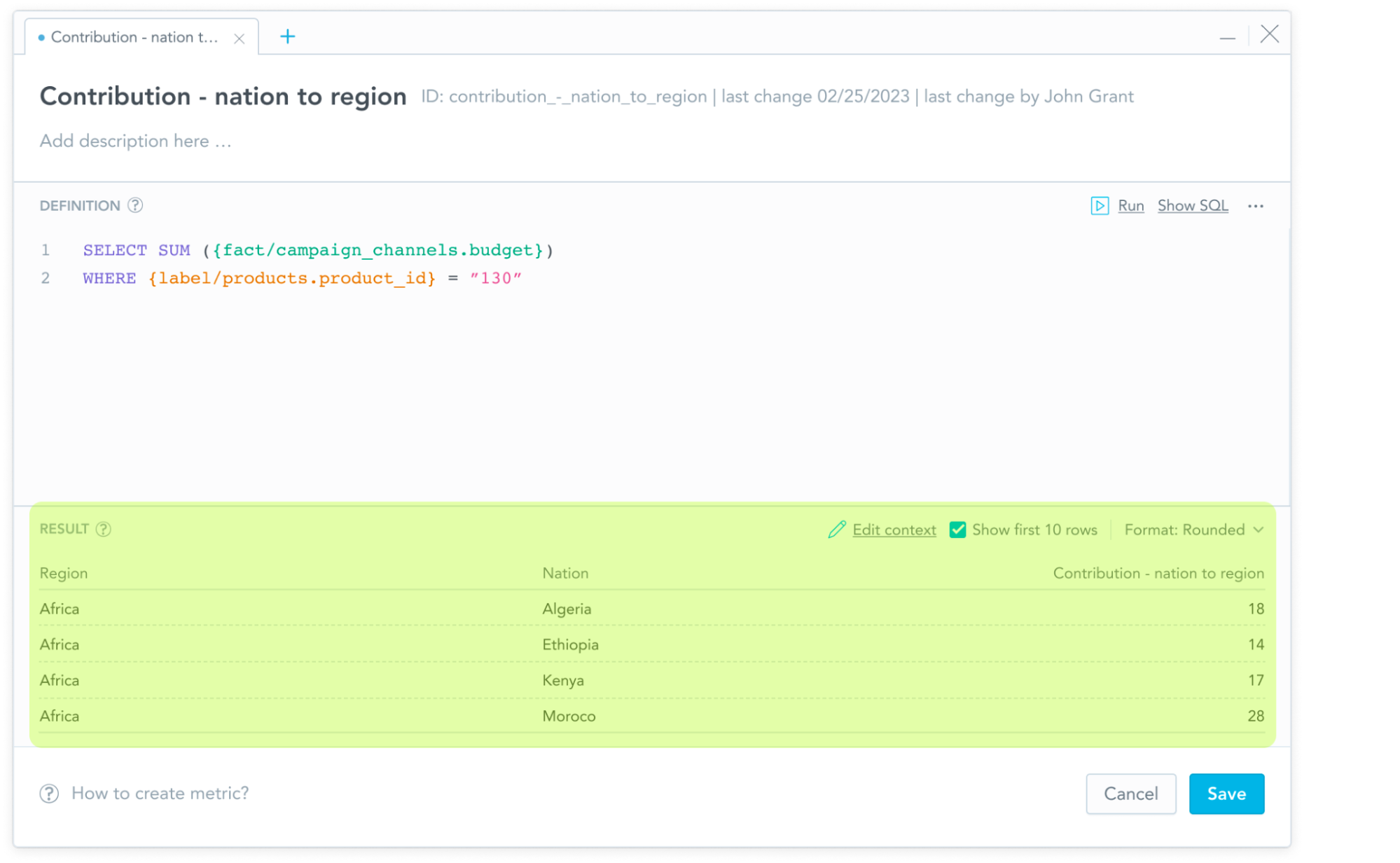
Do You Want to Stay in Touch?
If you like this approach to analytics, feel free to stay in touch and subscribe to our updates — we will keep you informed about the progress of the plugin!
Thank you for reading! We have shown you the basic pillars of analytics as code — collaboration, change management, effectiveness, and testing.
Stay updated on analytics as code
SubscribeWritten by Patrik Braborec |
Subscribe to our newsletter
Get your dose of interesting facts on analytics in your inbox every month.
Subscribe